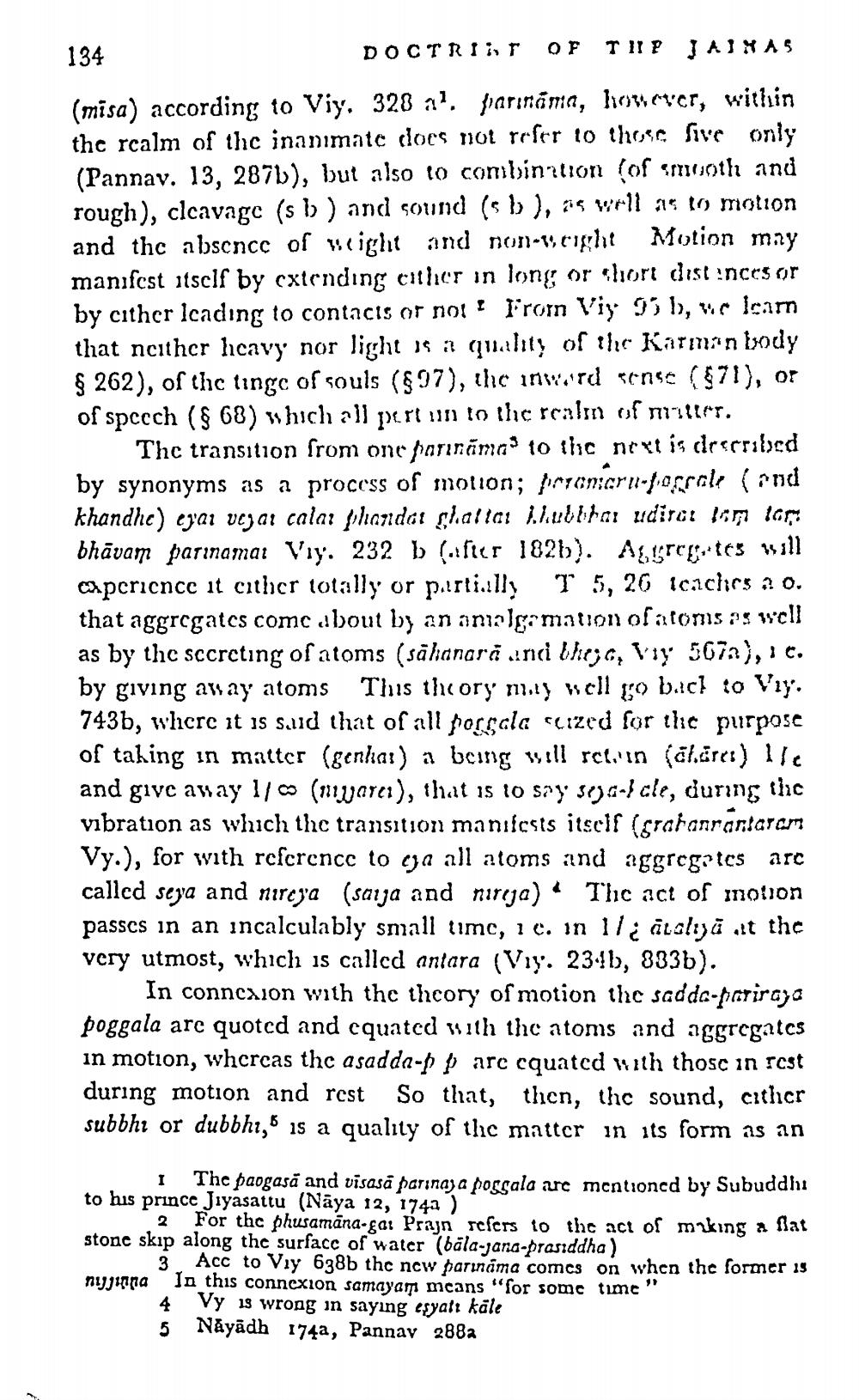________________
134
DOCTRIT OF TIP JAINAS
(misa) according to Viy. 328 a1. parināma, however, within the realm of the inanimate does not refer to those five only (Pannav. 13, 287b), but also to combination (of smooth and rough), cleavage (sb) and sound (s b ), as well as to motion and the absence of weight and non-weight Motion may manifest itself by extending either in long or short distances or by either leading to contacts or not From Viy 95 b, we learn that neither heavy nor light is a quality of the Karman body § 262), of the tinge of souls (§97), the inward sense (§71), or of speech (§ 68) which all pert un to the realm of matter.
The transition from one parinamas to the next is described by synonyms as a process of motion; perameru-pegrale (and khandhe) eyar vezar calar phandar ghattar klubbbar udirat lam tar bhāvam parinamat Viy. 232 b (after 182b). Aggregates will experience it either totally or partially T5, 26 teaches a o. that aggregates come about by an amalgamation of atoms as well as by the secreting of atoms (sähanarā and bheja, Viy 567a), 1 c. by giving away atoms This theory may well go back to Viy. 743b, where it is said that of all porgala seized for the purpose of taking in matter (genhai) a being will retain (dhäret) 1/e and give away 1/∞ (myare), that is to say sea-l cle, during the vibration as which the transition manifests itself (grabanräntaram Vy.), for with reference to ja all atoms and aggregates are called seya and nireya (saija and nurga) The act of motion passes in an incalculably small time, 1 c. in 11¿ atalya at the very utmost, which is called antara (Viy. 234b, 833b).
In connexion with the theory of motion the sadda-pariraya poggala are quoted and equated with the atoms and aggregates in motion, whereas the asadda-pp are equated with those in rest during motion and rest So that, then, the sound, either subbhi or dubbhi,5 is a quality of the matter in its form as an
I
The paogasă and visasa parinaya poggala are mentioned by Subuddhi to his prince Jiyasattu (Naya 12, 1743)
2 For the phusamana-ga: Prajn refers to the act of making a flat stone skip along the surface of water (bala-jana-prasiddha)
3
Acc to Viy 638b the new parināma comes on when the former is In this connexion samayam means "for some time Vy is wrong in saying eşyatt käle
nijjinna
"
4
5 Nayadh 174a, Pannav 2882




